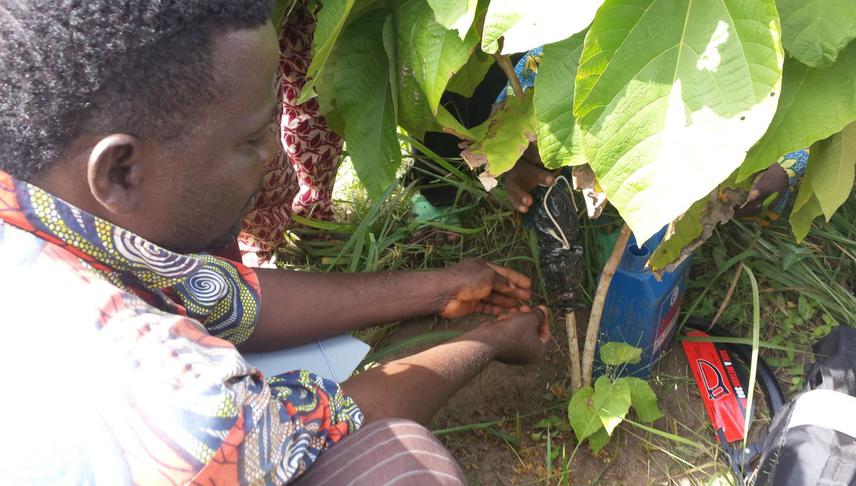Alfred Houngnon
Other projects
17 Feb 2014
Community Based Actions to Benefit a Threatened Plant Species: Case Study of Bequaertiodendron oblanceolatum in Ewe-Adapklamey Remnant Forests in Benin
23 Jan 2017
Interplay between Men, Fire and Vegetation: Lessons for Developing Community Tourism and Preserving the Last Threatened Ewe-Adakplame Relic Forest in Benin
In Ketou District, primate populations are threatened with extinction as a result of deforestation and the reduction of their natural habitat. The current project, designed in consultation with forty local-leaders, will explore the native trees used for food by Ketou's primates and carry out replanting using appropriate techniques.

Air layering of Englerophytum oblanceolatum, 16 months.
The most significant threat to survival of wildlife is habitat fragmentation due to intense timber exploitation, clearance for farmland, bush fires, and encroaching human boundaries. These are also the main reasons behind reduced forest area and changes in forest structure. In south-east Benin Republic (BR), Ketou District covers 1,775 km². It was historically among the least disturbed forest zones but, recently, the region has experienced a high rate of deforestation; resulting in just three remaining fragments of forest: Dogo Forest, Ketou Forest and Ewe-Adaklamey Remant Forest (EARF). In BR, EARF is a unique last refugium for many globally threatened plants species, often poorly known in BR.
Wild mammals and most of the disturbance-sensitive primates have disappeared, while those remaining continue being pressurized under severe declining food resources. They are likely to disappear completely if nothing is done to protect their natural habitat. Moreover, forests of Ketou are completely isolated from the national protected areas concentrated in the northern part of BR. The region is still entirely managed by the local communities and has, historically, not been prioritized for conservation.
The need for concerted conservation efforts and to save the endangered native trees that provide food for primates in the forests of Ketou is now vital. Conservation is still possible while taking into account the needs of the local communities. The project will focus on appropriate tools for sustainable conservation and preventative methods to restore primate habitat and monitor their return; specifically we will:
1 - Map the distribution of the tree species identified by local communities as being useful for primates in forests of Ketou. Their ecological value will be assessed in order to design a conservation approach taking into account their ecological importance. Geographical Information System (GIS), direct field observation, participant observation, interviews and questionnaire techniques will be adopted to meet the project objectives. The hunters of the community know where to find foraging primates in time and space. This initial information will form the first robust data set for primates in Ketou District.
2 – Strengthen the relationship with local people by using Farmer Field Schools to train on seed collecting, nursery monitoring, propagating and replanting programme to promote practical conservation and complement our existing reforestation programme. Our team will provide information related to local primates and tree species to schools within the communities where this project will be conducted.